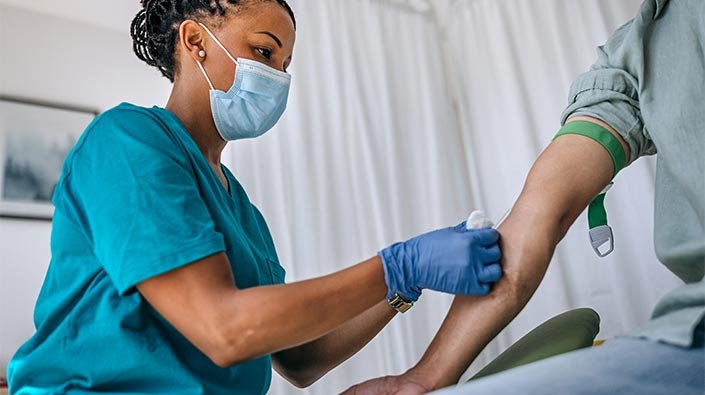The Role of Phlebotomists in Reducing Healthcare Inequities
Summary
- Phlebotomists play a crucial role in the healthcare system by collecting blood samples for testing and analysis.
- Improving access to phlebotomy services can help reduce healthcare inequities by ensuring that all patients have equal opportunities for diagnosis and treatment.
- Training and empowering phlebotomists to work in underserved communities can help bridge the gap in healthcare disparities.
The Role of Phlebotomists in Healthcare
Phlebotomists are essential members of the healthcare team, responsible for collecting blood samples from patients for testing and analysis. Their primary role is to ensure accurate and reliable blood samples are obtained for diagnostic purposes. Phlebotomists work in a variety of settings, including hospitals, clinics, laboratories, and mobile testing units.
Collecting Blood Samples
Phlebotomists use various techniques to collect blood samples from patients. They must follow strict protocols to ensure the safety and well-being of the patient, as well as the accuracy of the sample. Phlebotomists are trained to identify the appropriate veins for blood collection and to use the correct equipment and techniques to minimize pain and discomfort for the patient.
Processing and Handling Blood Samples
Once the blood sample is collected, phlebotomists are responsible for processing and handling it properly to ensure accurate Test Results. This includes labeling the sample correctly, following storage and transportation protocols, and documenting the collection process accurately. Phlebotomists play a crucial role in maintaining the integrity of the blood sample until it reaches the laboratory for analysis.
Addressing Healthcare Inequities
Healthcare inequities refer to disparities in access to healthcare services and outcomes among different populations. These inequities can be attributed to various factors, including socioeconomic status, race, ethnicity, geography, and education. Phlebotomists can contribute to reducing healthcare inequities by improving access to phlebotomy services for underserved communities.
Improving Access to Phlebotomy Services
One way phlebotomists can help reduce healthcare inequities is by increasing access to phlebotomy services in underserved areas. By establishing Mobile Phlebotomy units or partnering with community health centers, phlebotomists can bring blood collection services to patients who may not have easy access to healthcare facilities. This can help ensure that all patients have equal opportunities for diagnosis and treatment, regardless of their location or socioeconomic status.
Providing Culturally Competent Care
Phlebotomists who are trained to provide culturally competent care can help bridge the gap in healthcare disparities. Cultural competence involves understanding and respecting the cultural beliefs, values, and practices of patients from diverse backgrounds. Phlebotomists who are sensitive to the cultural needs of their patients can help build trust and communication, leading to better health outcomes for all patients.
Empowering Phlebotomists in Underserved Communities
Training and empowering phlebotomists to work in underserved communities is another way to reduce healthcare inequities. By providing education and resources to phlebotomists in these areas, healthcare organizations can ensure that all patients receive high-quality phlebotomy services, regardless of where they live. Empowering phlebotomists to be advocates for their patients can help address systemic barriers to healthcare access and contribute to more equitable healthcare outcomes.
Conclusion
Phlebotomists play a vital role in the healthcare system by collecting blood samples for testing and analysis. By improving access to phlebotomy services, providing culturally competent care, and empowering phlebotomists in underserved communities, we can work towards reducing healthcare inequities and ensuring that all patients have equal opportunities for diagnosis and treatment.

Disclaimer: The content provided on this blog is for informational purposes only, reflecting the personal opinions and insights of the author(s) on the topics. The information provided should not be used for diagnosing or treating a health problem or disease, and those seeking personal medical advice should consult with a licensed physician. Always seek the advice of your doctor or other qualified health provider regarding a medical condition. Never disregard professional medical advice or delay in seeking it because of something you have read on this website. If you think you may have a medical emergency, call 911 or go to the nearest emergency room immediately. No physician-patient relationship is created by this web site or its use. No contributors to this web site make any representations, express or implied, with respect to the information provided herein or to its use. While we strive to share accurate and up-to-date information, we cannot guarantee the completeness, reliability, or accuracy of the content. The blog may also include links to external websites and resources for the convenience of our readers. Please note that linking to other sites does not imply endorsement of their content, practices, or services by us. Readers should use their discretion and judgment while exploring any external links and resources mentioned on this blog.

